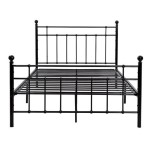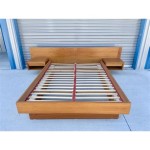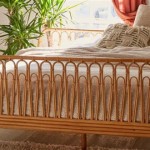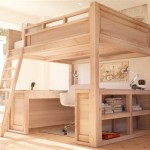At What Age Can A Child Sleep In A Loft Bed?
Loft beds, with their elevated sleeping platform and additional storage space below, can be an exciting and practical addition to a child's bedroom. They offer a sense of adventure and a space-saving solution, particularly in smaller rooms. However, safety concerns are paramount when it comes to loft beds, and determining the appropriate age for a child to transition to one is crucial. There is no universal age guideline, as individual children mature at different rates and possess varying levels of maturity and safety awareness. Several factors should be considered before deciding whether a loft bed is suitable for a child.
Physical Development and Motor Skills
One of the primary considerations is a child's physical development and motor skills. Climbing up and down a ladder, maneuvering around the bed frame, and maintaining balance can be challenging for younger children.
Children under the age of six typically lack the necessary coordination, strength, and judgment to navigate a loft bed safely. Their smaller size and developing balance can increase the risk of falls.
As children approach school age, their motor skills improve significantly. Usually, children between six and eight years old can navigate a loft bed with more confidence, though close supervision is still essential.
To assess a child's readiness, observe their ability to:
* Climb stairs independently and with confidence.
* Maintain balance on a ladder and navigate steps without stumbling.
* Follow instructions and understand the importance of safety precautions.
Behavioral Maturity and Cognitive Development
Beyond physical development, a child's behavioral maturity and cognitive development play a significant role in their readiness for a loft bed.
Children who are impulsive or prone to risk-taking may be more likely to engage in unsafe behaviors around a loft bed. They may forget safety instructions or disregard them altogether, increasing the potential for accidents.
Cognitive development also influences a child's ability to understand and navigate potential hazards.
Children must understand the height of the bed, the risks associated with falling, and the importance of using the ladder safely.
Factors to consider regarding behavioral maturity and cognitive development include:
* The child's ability to follow instructions and understand the importance of safety precautions.
* Their capacity for self-control and responsible decision-making.
* Their understanding of the risks associated with climbing, falling, and playing around the loft bed.
The Loft Bed's Safety Features
The safety features of the loft bed itself are equally crucial.
A well-designed and safe loft bed incorporates several safety components:
*
Secure Ladder:
The ladder should be sturdy, with wide steps and a handrail.*
Guardrails:
High guardrails on all sides of the sleeping platform are essential to prevent falls. Ideally, they should be at least 18 inches high and have a gap no wider than 3.5 inches.*
Stable Frame:
Choose a loft bed with a robust and stable frame that can support the weight of the child and any additional items on the bed.*
Anti-Slip Surface:
The bed surface should have an anti-slip material to prevent slipping and falls.*
Proper Installation:
The loft bed should be assembled correctly and securely anchored to the wall to prevent movement and tipping.Alternative Options
For children not yet ready for a loft bed, there are alternative options that offer similar benefits.
*
Bunk Beds:
Bunk beds provide a more compact sleeping arrangement, with an upper bunk and a lower bunk, but they lack the additional storage space of a loft bed.*
Cabin Beds:
Cabin beds, with their enclosed lower section, provide a similar sense of privacy and storage space as a loft bed.*
Elevated Bed Frames:
There are bed frames that elevate the mattress without a full loft bed structure. These can offer some storage space underneath while still maintaining a lower sleeping platform.Conclusion
Deciding when a child is ready for a loft bed requires careful consideration of their physical development, behavioral maturity, and cognitive development. Additionally, the safety features of the loft bed and alternative options should be explored.
Ultimately, the best decision is based on the individual child's maturity and readiness.
With careful consideration and proper precautions, loft beds can be a safe and enjoyable part of a child's bedroom, offering a sense of adventure and practicality for many years to come.

From Toddler To Teen A Guide Kids Beds For Every Age Cuckooland

When Is Your Child Ready For A Bunk Bed We Would Like To Talk About It

How To Decide If A Loft Bed Is Right For You

Everything Pas Should Know About Bunk Beds Cuckooland

What Age Can A Child Sleep On Top Bunk Bed

When Is Your Child Ready For A Bunk Bed We Would Like To Talk About It

What Age Are Loft Beds Suitable For Childrens Bed

Everything Pas Should Know About Bunk Beds Cuckooland
At What Age Is It Safe To Allow Your Kids Sleep In A Bunkbed Quora

Are Loft Bunk Beds Safe For Kids Toddlers Sleep Advisor







